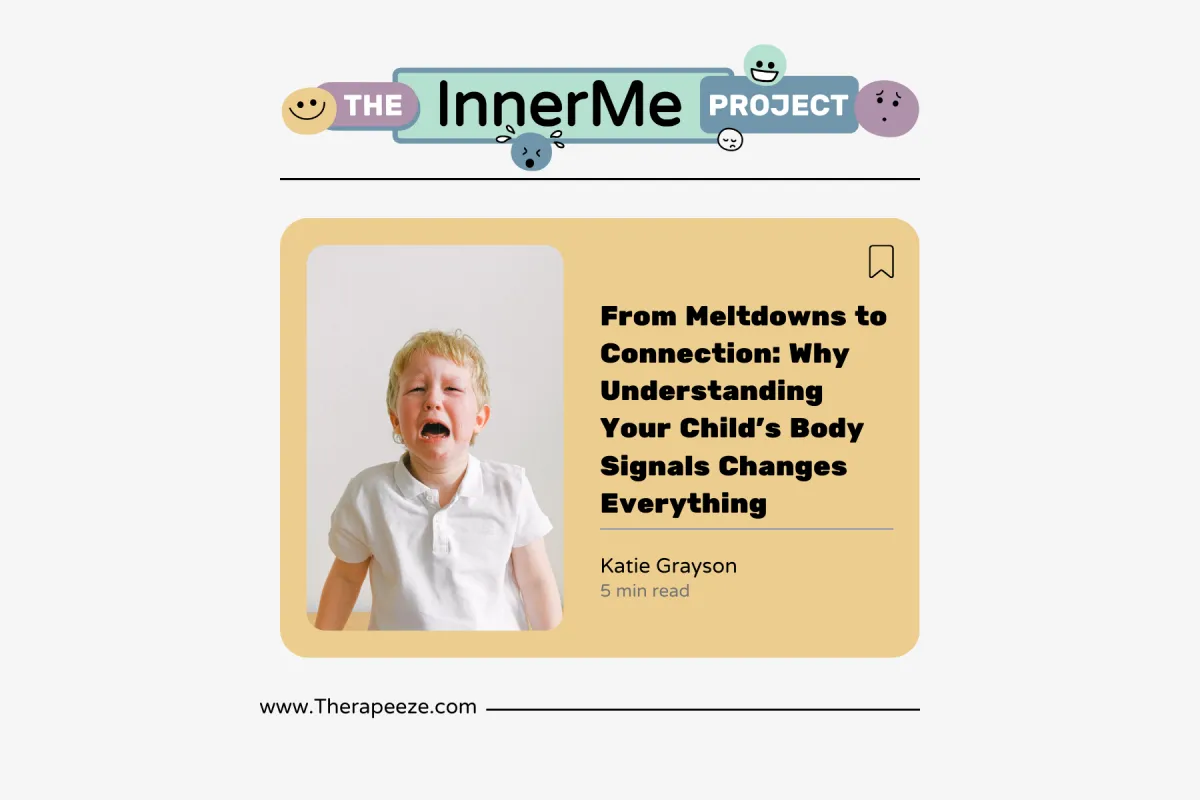
From Meltdowns to Connection: Why Understanding Your Child’s Body Signals Changes Everything
It’s that time of year again. Summer holidays are winding down, uniforms are waiting in the drawer, and parents everywhere are bracing themselves for the back-to-school juggle. For many families, this change of routine brings excitement… but also meltdowns, worries, and big behaviours that can feel impossible to manage.
If this sounds familiar, let me reassure you: your child isn’t being “naughty” or “defiant.” What you’re seeing is their body shouting louder than their words.
Behaviours are Body Signals in Disguise
As a Specialist Occupational Therapist working with neurodivergent children and families for over 18 years, I’ve seen one pattern time and time again: when behaviours feel baffling, it’s usually because the body is struggling to regulate.
That “refusal” to put on school shoes? It might be a sensory signal that the socks feel unbearably itchy.
The constant “tummy aches” before school? Often, that’s anxiety showing up through interoception – the way our body tells us what’s happening inside.
The tears over homework after school? A signal that your child’s nervous system is burnt out and needs recovery time, not more demands.
When we reframe behaviours as signals from the body, the whole picture changes. Instead of “How do I stop this?” the question becomes “What is their body trying to tell me?”
Why This Matters for Back-to-School
Transitions are some of the hardest times for children – especially those who are neurodivergent or have experienced trauma. The return to school means:
New routines and less predictable days.
Increased sensory input (noise, lights, crowded corridors).
Pressure to perform, sit still, and “behave.”
No wonder their nervous systems go into overdrive.
By spotting body signals early, parents can step in with connection instead of correction. That small shift can prevent a full-blown meltdown and build trust instead of conflict.
Practical Tips for Parents This September
Name What You Notice
Instead of “Stop messing around with your shoes,” try:
“I can see your body doesn’t like those socks today. Let’s find a pair that feels better.”
This validates the body signal and helps your child tune into it.Build In Recovery Time
Don’t expect your child to come home from school and dive straight into homework. Give them 20 minutes to meet their sensory needs:- a crunchy or chewy snack, some quiet space, slow linear movement where you can or a physical activity first (That uses their muscles!). Think of it as a “reset button” for their nervous system.Create Predictability
Use a simple morning routine chart, or agree a “get ready playlist.” Predictability reduces the load on their body and mind, making mornings calmer for everyone.Stay Regulated Yourself
Your child’s nervous system is wired to pick up on yours. If you’re frazzled, they’ll feel it. Take a deep breath, slow down your voice, and model calm – even if inside you’re thinking “We’re going to be late!” ( And if you can't be calm pretend your a grizzly bear and growl - this regulates your nervous system whilst turning the situation playful!).
When families make this shift, seeing behaviours as body signals, not battles, everything softens. Children feel safer. You as a parent feel more confident (This includes me as well). And connection grows where conflict once lived.
If you’re ready to take this further, my InnerMe 8-Week Programme dives deep into exactly this: helping parents understand body signals, build regulation routines, and create calmer homes.
It’s practical, neuro-affirming, and written for busy families who want straightforward strategies that actually work.
👉 Click here to find out more and join our next group.
Kate xx
